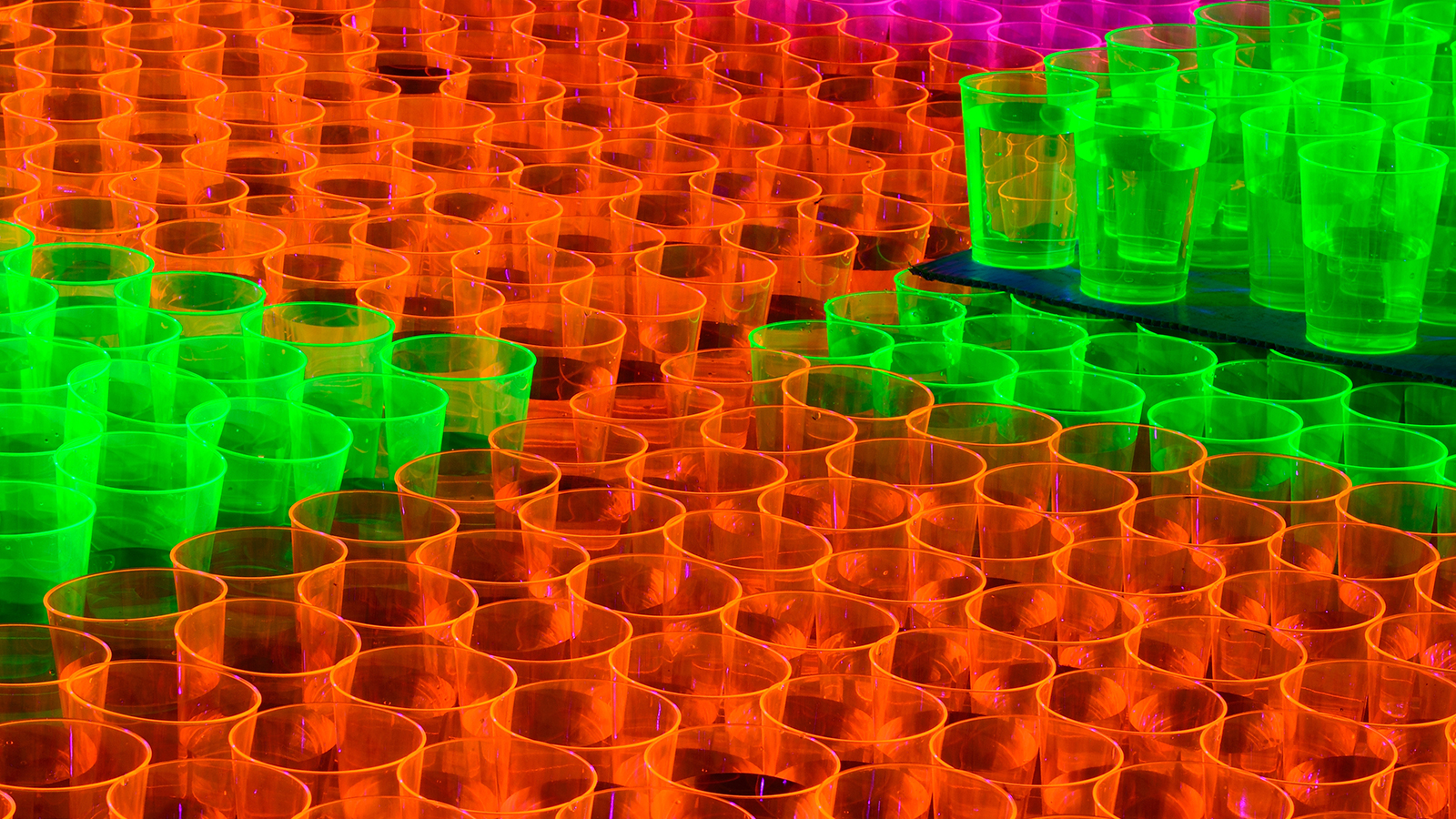Q. Dear Umbra,
I recently took a trip to New Orleans. I’m shocked at all the single-use plastic cups being used and not being recycled. I know they’re proud of their go-cups and alcohol drinks in the streets, but the problem of plastic pollution is serious. I carried my own stainless steel reusable cup everywhere, but no one else seemed to have the same environmental concern. We went on to Florida after that and I was served a margarita in a disposable plastic cup in a restaurant that used ceramic dinnerware, silverware, and glasses for beer and water. What is going on with this overuse of single-use plastic cups in bars and restaurants? And don’t get me started on the straw issue!
Ann C.
Incline Village, Nev.
A. Dearest Ann,
Forgive me, but I am picturing you wandering the French Quarter, responding to the general gaiety with a stern look and a righteous shake of your stainless-steel cup. I can relate, to a point — “Let’s All Use Reusables” is one of my favorite theme songs, after all — but sometimes you just have to laissez les bon straws roll.
However! In the optimistic spirit of Mardi Gras, and since you asked, let’s take a moment to address this undeniably wasteful American habit. Donning a harlequin mask for this discussion is optional, but encouraged.
Disposable plastic doodads are a scourge on the earth. Many plastic items can be recycled, but that doesn’t happen often enough. Americans throw away enough plastic and paper cups and plastic utensils each year to girdle the globe 300 times. We toss 25 billion Styrofoam vessels every year. We’re filling the oceans with giant floating plastic dumps.
You ask why restaurants rely on disposable plastic cups, and I think it boils down to two main reasons. In freewheeling places like Las Vegas, Memphis, and New Orleans, the laws that allow tourists to stumble around in the streets with drinks actually mandate the use of plastic cups. This is, at least in part, a safety measure. But the primary reason you’ll find plastic cups in heavy use at many a joint, even those slinging sodas and tap water: It’s easy. Maybe the restaurant lacks dishwashing facilities, or just doesn’t want to deal with it. Maybe it only serves takeout, and there’s no easy way for customers to return a reusable beverage glass.
Perhaps some of us can relate to this tendency. It’s the same reason hosts turn to single-use plastic cups for parties: A sleeve of red Solo cups means no dish duty. The plastic industry has conditioned us all to believe this is a cheap, hassle-free solution — to a nonexistent problem.
This is a shame, as reusable glasses all have a lower environmental impact than their disposable counterparts. We need only use stainless-steel vessels 24 times and glass 15 times to break even with their manufacturing footprints. Even ceramic mugs, the highest-impact option, only need to be used 118 times before you can slurp from them with a clean conscience. Not to mention the undeniable class that reusable drinking vessels bring to an establishment (yes, even more than those cactus-shaped margarita glasses).
And then there are the straws. Frankly, I don’t know why we still use disposable straws, unless we are medically unable to lift a cup to our lips (and there are excellent reusable options in that case). Every day in America, we use 500 million polypropylene straws, which usually can’t be recycled because they’re small and light and therefore tend to clog up the sorting machines at the plant. So they end up in the landfill, or worse, in the oceans: Straws are among the top 10 pieces of trash found in our waterways.
But luckily enough, the solutions to both of these waste issues are simple. You’ve already identified one, Ann: Tote your own reusable cup. This one is nice and sleek, and this one collapses into a pocket-size puck, and any of them would make a lovely Valentine’s Day present (you’re welcome, gift procrastinators).
As for straws: Just say no. Take a cue from the Be Straw Free campaign (which was started by an enterprising 9-year-old, proving once again that children are vastly wiser than us and therefore there might be a sliver of hope for the future) and request that your drinks come without them. Even better, politely ask your favorite local restaurant if they will consider serving straws to others only when specifically requested. The more all of us make it clear that we’re proud to be disposable straw- and cup-free, the more the restaurant industry will take notice, and the less frustrated we’ll all be.
Now that we’ve solved that problem, Ann, here’s a sobering thought: The impacts of travel are just as dastardly as our obsession with plastic. If you really want to help the planet, and I can tell that you do, the best choice you can make is to avoid trips such as the one you’ve described, stay home all the time, and occasionally shake your stainless-steel cup at the sky.
I’m kidding. Maybe.
Open-containedly,
Umbra



